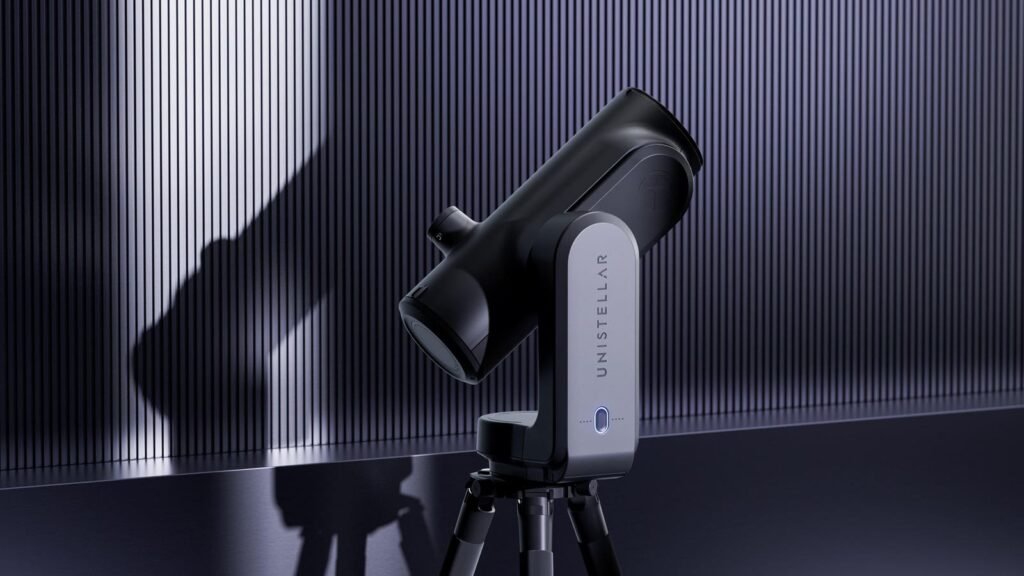Unistellar Odyssey Pro is designed to make downtown stargazing simple
Unistellar is launching two new smart telescopes designed to make astronomy easier and clearer for people living in cities.
The Unistellar Odyssey and Odyssey Pro are smart telescopes that work in conjunction with a mobile app that points the telescope at objects of interest in the sky and displays the images taken on smartphones and tablets. In fact, only the Odyssey Pro has a conventional eyepiece — the regular Odyssey only lets you view images on your mobile device.
Launching at CES 2024 in Las Vegas, this new generation of devices has been designed specifically with people living in light-polluted inner-city areas in mind.
“Conventional telescopes have two big problems,” said Laurent Marfisi, CEO and co-founder of Unistellar. “The first is that you don’t see much in the telescope except the moon and the major planets [Venus, Saturn, Jupiter and Mars].”
“So we built a telescope that could actually see there, the galaxies, and especially the comets—hundreds of them hidden in the sky.”
Sky watchers would normally need different telescopes to see both closer objects such as planets and deep sky objects such as nebulae. However, Marfisi claims the Odyssey series will let you see both, even from light-polluted areas. This is due to a patented pixel-binning technology – similar to that used in smartphone cameras – which allows the telescope’s sensor to be used in two different modes.
The first mode uses the full resolution of the sensor to capture the closest objects, such as planets, which are very bright but very small compared to galaxies and nebulae. “When you see Jupiter, it looks like a bright star in the sky,” Marfisi said. “That’s because it’s quite small. To notice you need as much resolution as you can get.’
When trying to see galaxies or nebulae, the problem is their lack of brightness. So here the telescope uses pixel binning to capture more light, at the expense of some detail. “To give you an example, if the Andromeda Galaxy were as bright as the moon, you would see an object that is almost three times the size of [full] moon in the sky,” said Marfisi. “These are very large objects, and so we just bundle the pixels together in groups of four, which boosts the size of the pixels in the receiver, which allows for the detection of many more photons per square pixel.”
Making Astronomy Easier
The app identifies interesting objects in the sky
The second of the big problems with conventional telescopes that Marfisi mentioned above is ease of use – people struggle to find interesting objects in the sky.
This is where the companion app comes in, automatically pointing the telescope at phenomena in the sky at the right time. The app now not only highlights the key elements to look for on that particular night, but provides contextual information about the object in the sky. For example, it can explain that a nebula exploded thousands of years ago, and that the atoms formed from that explosion might create future planets or stars. “Each time, we’re giving a little story that’s part of the grand scheme of how the universe works,” Marfisi said.
The other ease-of-use advantage in the new telescopes is a new high-performance optical tube developed with Nikon. The problem with telescope mirrors is that they need to be realigned every now and then, and this is no simple task for a novice.
“We worked with Nikon to develop the first optical tube that has mirrors that don’t need manual adjustments,” Marfisi said. “This allows us to solve this dilemma of power versus convenience in optics.”
This combined with a new autofocus system, similar to that found in digital cameras, should deliver sharp images of sky objects every time, Marfisi claims.
The Odyssey telescope without the eyepiece will cost $2,499, while adding the eyepiece to the Odyssey Pro brings the price to $3,999. There will also be a striking red version of the Pro telescope priced at $4,499.
